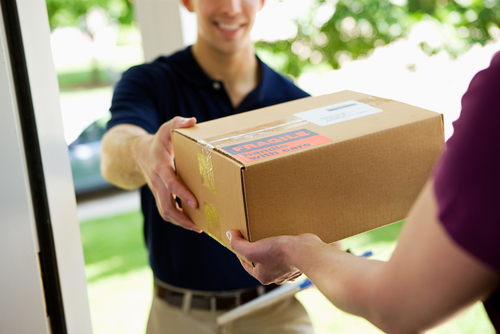Details matter. Execution is essential… it might make a difference on what is under your tree.
In 2014, e-commerce strategies grew in importance. In the last decade, e-commerce was a permissible and desirable channel only for retailers. At that time, manufacturers talked about customer-centric supply chains but were afraid to aggressively adopt e-commerce strategies. They were afraid of retail retaliation. This has changed. Manufacturers are aggressively pursuing e-commerce strategies today .
When your phone rings, and you and your supply chain team is called to the corporate office to talk about the expansion of your e-commerce strategy for 2015, here are my recommendations:
1) Embrace the Each. Get Good at Having a Real-Time Perpetual Inventory Signal. Foundational for e-commerce is a real-time perpetual inventory (PI) signal. It is necessary and fundamental. Today, only 58% of retailers have a good PI signal in their stores, and only 60% have a good PI signal in their distribution centers. Don’t fool yourself. If you are going to be excellent at e-commerce fulfillment you need to have great perpetual inventory capabilities. This is why many retailers have struggled with cross-channel fulfillment.
2) Endless Aisles Need Boundless Fulfillment. Cloud-based logistics and warehouse management are combining with B2B networks to enable multi-tier fulfillment. When a customer places an order, be sure that you can guarantee delivery. No matter where inventory is, put it to work. Select your technology partners based on reliability and flexibility for e-commerce capabilities and aggressively build a multi-tier available-to-promise (ATP) signal to enable drop shipments and merge in transit capabilities.
3) Test and Learn. Aggressively use your e-commerce channel to test and learn. The demand latency of e-commerce is hours and days while traditional channels is days and weeks. Aggressively design and test products online and then bring the data into your forecasting tools to predict sales of new products by channel. Make test-and-learn an active part of your supply chain strategy.
4) Pick Your Partners Carefully. Customer Service Needs to Be All the Way to the Last Mile. If you offer white-glove service, define it and select service providers based on their ability to deliver. Don’t assume that there is a standard definition, and just because a 3PL signed a contract to deliver it, don’t expect that you are working on the same definition. Define, audit, and pay for premium service.

5) Design the Last Mile. E–commerce is closely coupled with new channels and innovative ways of ordering and payment. The proliferation of the business models is exciting. It was great to see click-and-pay on the London tube, and I love some of the new models that are being developed in grocery and specialty stores for purchasing online and pickup at the stores. However, do not take your last mile for granted. Design it. Define it. Redefine it. Make it work. It will make, or break, your operation.
Last year, Amazon struggled to make holiday deliveries. UPS, FedEx, and the U.S. Postal Service could not surge for peak demand. Problems continue, but 2014 was the year of experimentation. New approaches are being tried. Could your package be delivered by taxi? The answer is yes. Cabs in San Francisco are delivering packages in their trunks using an application called FlyWheel and manufacturers are experimenting with Uber. One thing is known: doing nothing is a recipe for disaster.
In summary, I want to leave you with a word of caution. In the last decade 3PLs and 4PL business models have grown, morphed and changed again. There is greater adoption and more hesitancy to use 3PLs for ecommerce. Most lack the ability to invest in picking the each and implementing systems to deliver the personalization and customization that e-commerce requires. So, if I were getting the call to come and talk about expanding the e-commerce strategy in 2015, I would use it as a foundational argument to invest in new forms of logistics infrastructure. I would build my own warehouses or very carefully pick a 3PL partner.
While you can outsource the supply chain, you cannot outsource the risk. The brand owner is always responsible for service, and from what I see in the 2014 holiday period, many of these stories are ripe for Saturday night live. I am increasingly skeptical that any 3PL is up to the challenge. What do you think?
Some of the packages on the trucks moving right now are the first shipments of Supply Chain Metrics That Matter. The book is the end of three years of research and nine months of writing. Holding the book in my hand was both invigorating and overwhelming at the same time. The book is available in both a digital and hardback format, and both versions are in the top 100 book sales at Amazon in Business and Commerce/Economy. It is exciting to see; and, making my publisher a believer that there are people in the world who care about supply chain!
So, if your doorbell rings heralding the arrival of your copy of Supply Chain Metrics That Matter, think about the importance of logistics this holiday season. I hope that it is under your tree. After you finish the book, please be sure to let me know what you think!
Have a great holiday and thanks for being a loyal reader of the Supply Chain Shaman blog. Keep the cards and letters coming! I love hearing from readers.

AI is Everywhere, but Nowhere. An Unfortunate Reality for Planning.
A discussion on why we cannot gain value by putting artificial intelligence on top of existing supply chain planning platforms.






